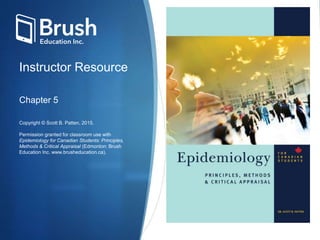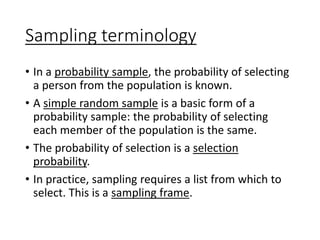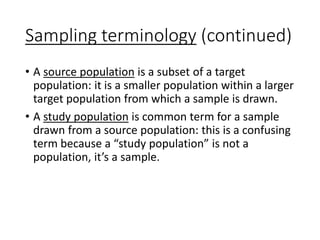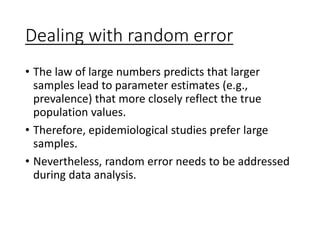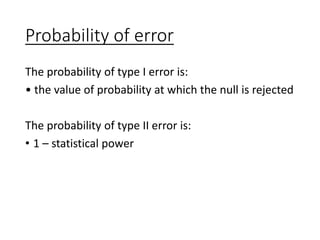This document summarizes key concepts about random error from sampling in epidemiological research. It defines random error as occurring when a sample-based estimate differs from the true population value due to chance. Larger sample sizes reduce random error through the law of large numbers. Confidence intervals and statistical tests are two approaches to addressing random error. Confidence intervals provide a range of plausible values for population parameters based on a sample. Statistical tests evaluate the probability that an observed effect is due to chance assuming the null hypothesis is true. Both approaches can make type I or type II errors when evaluating associations. Statistical power is the probability of correctly rejecting a false null hypothesis and is influenced by sample size, effect size, and significance level.
